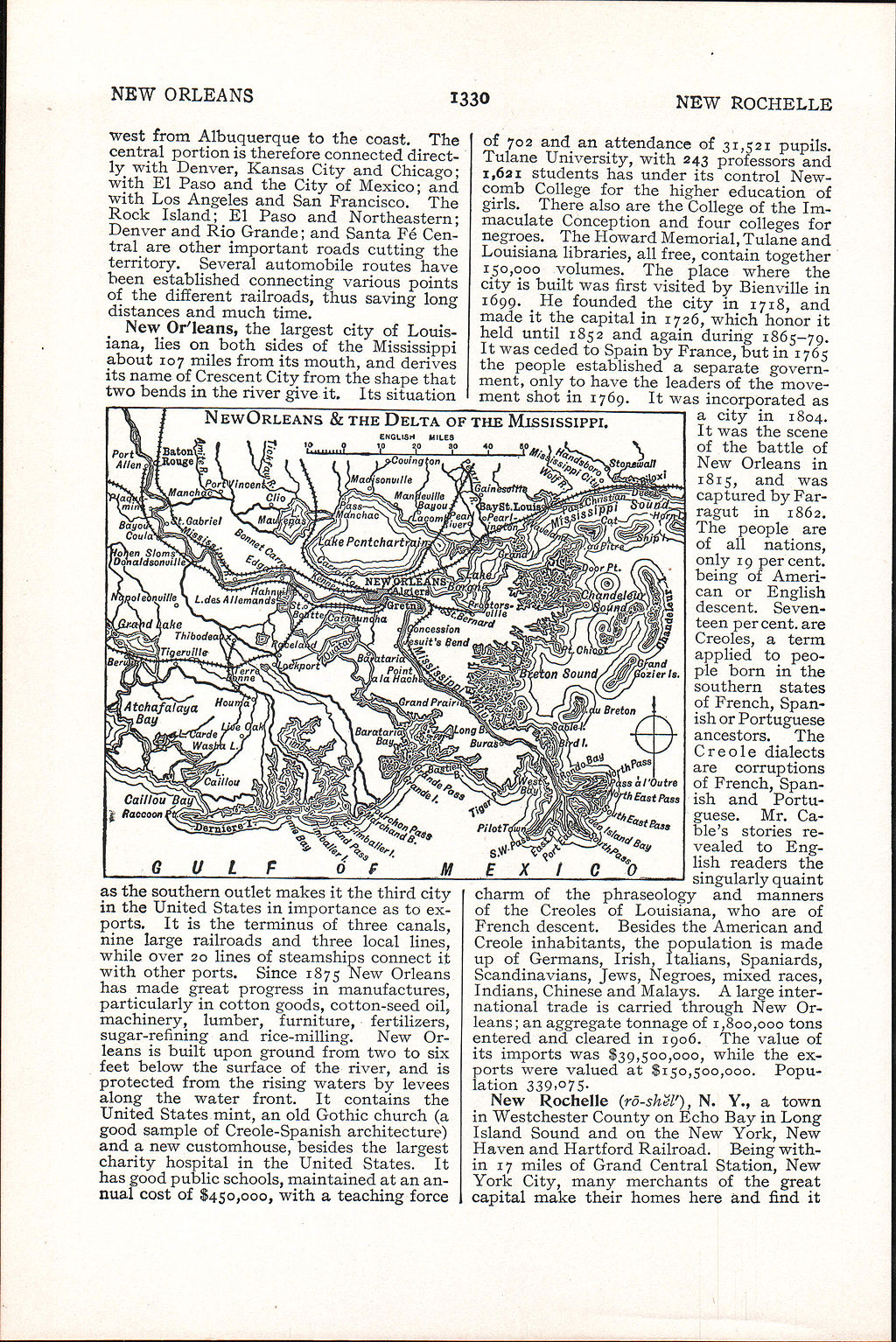west from Albuquerque to the coast. The central portion is therefore connected directly with Denver, Kansas City and Chicago; with El Paso and the City of Mexico; and with Los Angeles and San Francisco. The Rock Island; El Paso and Northeastern; Denver and Rio Grande; and Santa Fé Central are other important roads cutting the territory. Several automobile routes have been established connecting various points of the different railroads, thus saving long distances and much time.
New Or′leans, the largest city of Louisiana, lies on both sides of the Mississippi about 107 miles from its mouth, and derives its name of Crescent City from the shape that two bends in the river give it. Its situation as the southern outlet makes it the third city in the United States in importance as to exports. It is the terminus of three canals, nine large railroads and three local lines, while over 20 lines of steamships connect it with other ports. Since 1875 New Orleans has made great progress in manufactures, particularly in cotton goods, cotton-seed oil, machinery, lumber, furniture, fertilizers, sugar-refining and rice-milling. New Orleans is built upon ground from two to six feet below the surface of the river, and is protected from the rising waters by levees along the water front. It contains the United States mint, an old Gothic church (a good sample of Creole-Spanish architecture) and a new customhouse, besides the largest charity hospital in the United States. It has good public schools, maintained at an annual cost of $450,000, with a teaching force of 702 and an attendance of 31,521 pupils. Tulane University, with 243 professors and 1,621 students has under its control Newcomb College for the higher education of girls. There also are the College of the Immaculate Conception and four colleges for negroes. The Howard Memorial, Tulane and Louisiana libraries, all free, contain together 150,000 volumes. The place where the city is built was first visited by Bienville in 1699. He founded the city in 1718, and made it the capital in 1726, which honor it held until 1852 and again during 1865-79. It was ceded to Spain by France, but in 1765 the people established a separate government, only to have the leaders of the movement shot in 1769. It was incorporated as a city in 1804. It was the scene of the battle of New Orleans in 1815, and was captured by Farragut in 1862. The people are of all nations, only 19 per cent. being of American or English descent. Seventeen per cent. are Creoles, a term applied to people born in the southern states of French, Spanish or Portuguese ancestors. The Creole dialects are corruptions of French, Spanish and Portuguese. Mr. Cable's stories revealed to English readers the singularly quaint charm of the phraseology and manners of the Creoles of Louisiana, who are of French descent. Besides the American and Creole inhabitants, the population is made up of Germans, Irish, Italians, Spaniards, Scandinavians, Jews, Negroes, mixed races, Indians, Chinese and Malays. A large international trade is carried through New Orleans; an aggregate tonnage of 1,800,000 tons entered and cleared in 1906. The value of its imports was $39,500,000, while the exports were valued at $150,500,000. Population 339,075.
New Rochelle (rō-shĕl′), N. Y., a town in Westchester County on Echo Bay in Long Island Sound and on the New York, New Haven and Hartford Railroad. Being within 17 miles of Grand Central Station, New York City, many merchants of the great capital make their homes here and find it

